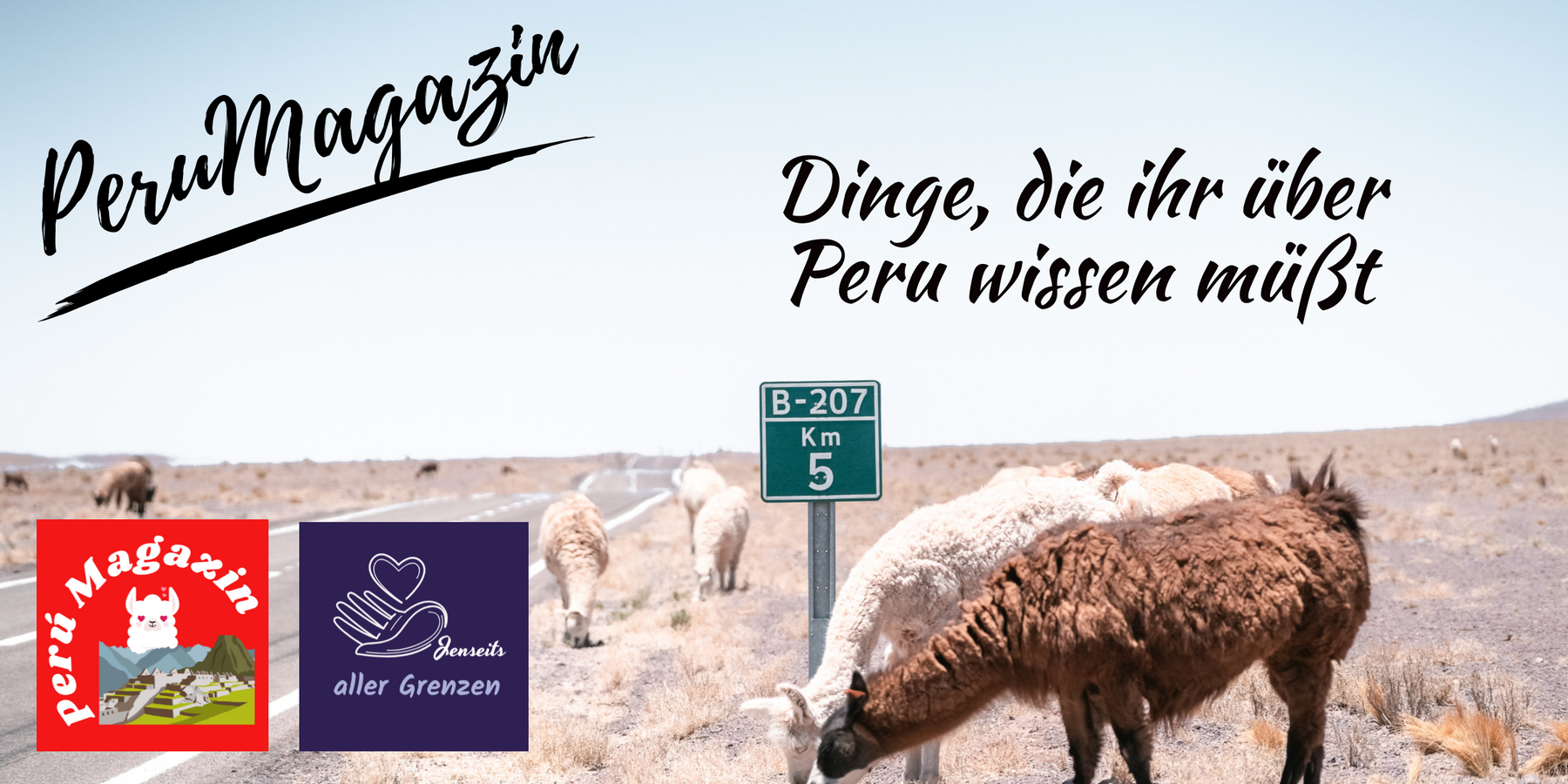
Things you need to know about Peru

Welcome to a unique insight into the fascinating Peru! This is no ordinary travel book, but rather a journey of discovery through the soul of this diverse country. In the next few minutes we will highlight key elements that will make your trip to Peru not just an adventure but a deep cultural experience. From the majestic Andes to the hidden gems of the Amazon, join us on a journey through the diversity that makes Peru so unique.
Majestic mountains, cloud forests, fascinating Inca ruins and traces of ancient civilizations await you in Peru. The Amazon jungle, colorful markets, colonial towns and impressive waterfalls are other highlights. The country impresses with blue lagoons, long overland journeys, the enjoyment of coca tea, lively traffic and the warmth of the people. Peru offers more than just the famous Machu Picchu. Preparing for altitude is important, as is adapting to different climates. The cultural diversity is reflected in the rich mix of indigenous, Spanish and African influences. When visiting Machu Picchu, purchasing tickets in advance is advisable and there are several hiking trails to get there. Sample local cuisine, be careful with street food, and drink purified water. Traffic in cities can be chaotic, and buses and shared taxis are common forms of transportation. Spanish is the official language; Quechua is also spoken in some regions. The official currency is the Peruvian Sol. Stay safe and, in addition to Machu Picchu, explore other natural beauties such as Colca Canyon, Lake Titicaca, the Nazca Lines and the Amazon jungle. Have fun on your journey through this diverse country!

Altitude Sickness in Peru: An Unavoidable Challenge for Adventurers
In Peru, particularly in regions such as Cusco and Huaraz, one experiences the effects of altitude immediately upon arrival, characterized by thinner air and possible headaches. Unlike other countries where the choice is to visit high altitude places, in Peru it is unavoidable if you want to experience the spectacular sights such as the Inca Trail or Lake Titicaca. With altitudes over 3000 meters and passes up to 5000 meters, this requires careful acclimatization to minimize the risk of altitude sickness. The need for acclimatization days before hiking or other high altitude activities is emphasized as there are no preparatory measures that can completely eliminate the risk. An in-depth post on hiking at altitude offers helpful tips for a safe and enjoyable experience.
Coca Tea in Peru: Cultural Significance, Altitude Sickness and Legal Considerations
The consumption of coca tea is culturally anchored in Peru and is used as a remedy against the effects of altitude sickness. The leaves of the coca plant contain small amounts of cocaine, but the tea does not typically have psychoactive effects. Travelers should be aware of legal requirements, especially when traveling to countries where cocaine is illegal. The tea can leave traces of cocaine in the blood, so caution is advised, especially before drug tests. Respect for the culture and mindfulness of legal and health issues are crucial.

Money in Peru: The Importance of Cash for Travelers
Peru, with its emerging economy, presents travelers with a bit of a challenge. In contrast to credit card practices in other countries, cash is essential here. It is recommended to withdraw money regularly and always carry cash with you. Although some companies accept credit card payments, caution is advised to avoid unfavorable exchange rates. Before traveling, it is advisable to check whether the destination offers ATMs to avoid carrying unnecessary cash.

Disposal of toilet paper in South American countries
In many South American countries, it is customary to dispose of toilet paper not in the toilet, but in a trash can next to the toilet. This practice typically applies to accommodations outside of four or five star hotels. Even though it may not seem hygienic, it is important to follow local customs to avoid problems. If you are unsure, we recommend asking at reception.
Night buses in Peru: Efficient travel despite distances and accidents
Peru is a large country with scattered locations, meaning traveling from north to south takes a lot of time. Night buses are a practical option to save time and money due to the distances between tourist points. Although initially dangerous and uncomfortable, they are efficient for exploring the land. We recommend bus companies such as MovilBus, Oltursa and Cruz del Sur. It is recommended to research different bus companies in advance and choose licensed, well-rated companies.
Culinary discovery in Peru: The guinea pig as a local delicacy
In Peru, it is almost impossible to complete the trip without trying guinea pig. Originally from the Andes of South America, the guinea pig, known locally as "cuy", is a common rodent that, despite its name, is not native to Guinea and is not a pig. It is prepared by many families using their own recipes and is widely available in fine dining restaurants. An interesting tip is to order fresh guinea pig in advance to make sure it doesn't come from the freezer. In addition to guinea pig, ceviche is another culinary delight not to be missed, especially in Lima.

Unforgettable expedition through the Amazon region in Peru
As part of our trip through South America, we decided to explore the Amazon region in Peru, more specifically the Pacaya Samiria Reserve. The journey took place via a flight from Lima to Iquitos, the gateway to the Peruvian Amazon. Our goal was to experience the adventure to the fullest, which is why we decided on a week-long camping trip.
The decision turned out to be absolutely right. The reserve revealed an impressive diversity of fauna and the jungle presented itself in its untouched wildness. Amidst this natural splendor, we found a rich biodiversity that far exceeded our expectations. From exotic birds to fascinating mammals, encountering wildlife was a highlight of our expedition. 
The decision to consider three days as the bare minimum proved valuable advice. A week allowed us to delve deeper into the untouched nature, which impressed us with its beauty and wildness. Every day brought new discoveries and experiences that made this trip an unforgettable adventure.
Overall, I can only recommend everyone to go on such an expedition to the Amazon region. The unique experience we had at Pacaya Samiria Reserve is a treasure not to be missed.
Peru's Two Seasons: Dry and Rainy
There are two main seasons in Peru – dry season (May to September) and rainy season (October to April). The dry season offers optimal weather with rare rain, particularly popular with travelers. However, the temperatures are lower as it is the Peruvian winter. The rainy season brings rainfall, but also holds benefits such as lower prices and more pleasant temperatures. Despite possible activity restrictions, the low season, particularly in the shoulder months of November and March, offers the opportunity to explore Peru without having to rely on peak travel times.
Inca Trail: Unique adventure to Machu Picchu
The Inca Trail is a fascinating path from the Sacred Valley to the mythical Inca citadel of Machu Picchu. The Peruvian government strictly regulates the number of hikers, and early booking is essential. Although the hike is expensive, no other route leads directly to Machu Picchu. Alternatively, the Salkantay Trek offers wonderful scenery around Cusco. Booking and permits should be made in advance, and the dry season from May to September is ideal. Fitness requirements, appropriate equipment and environmental responsibility are crucial. There are also other impressive trekking alternatives such as the Lares Trek or Choquequirao Trek.
Drinking water problems in Peru: Environmentally friendly solutions
Unlike their home country, visitors to Peru cannot drink tap water, leading to increased consumption of bottled water. This is not only expensive, but also harmful to the environment. The authors suggest using modern water treatment technologies such as SteriPen or filtered water bottles to make drinking water safer. Although some hotels provide water, this is not always a reliable option. The authors emphasize the importance of sustainable practices and suggest using such solutions for future trips.
Safety tips for traveling in Peru: experiences and advice
I emphasize that Peru is generally considered safe, but I advise using common sense. I share the positive experiences of most visitors, emphasizing the importance of choice of accommodation and caution in certain areas such as Lima and Chiclayo. General tips on keeping valuables safe, avoiding busy areas at night, and staying connected to other travelers are recommended to ensure a safe travel experience.
We will update this post from time to time. Because there are changes in Peru too.


Leave a comment